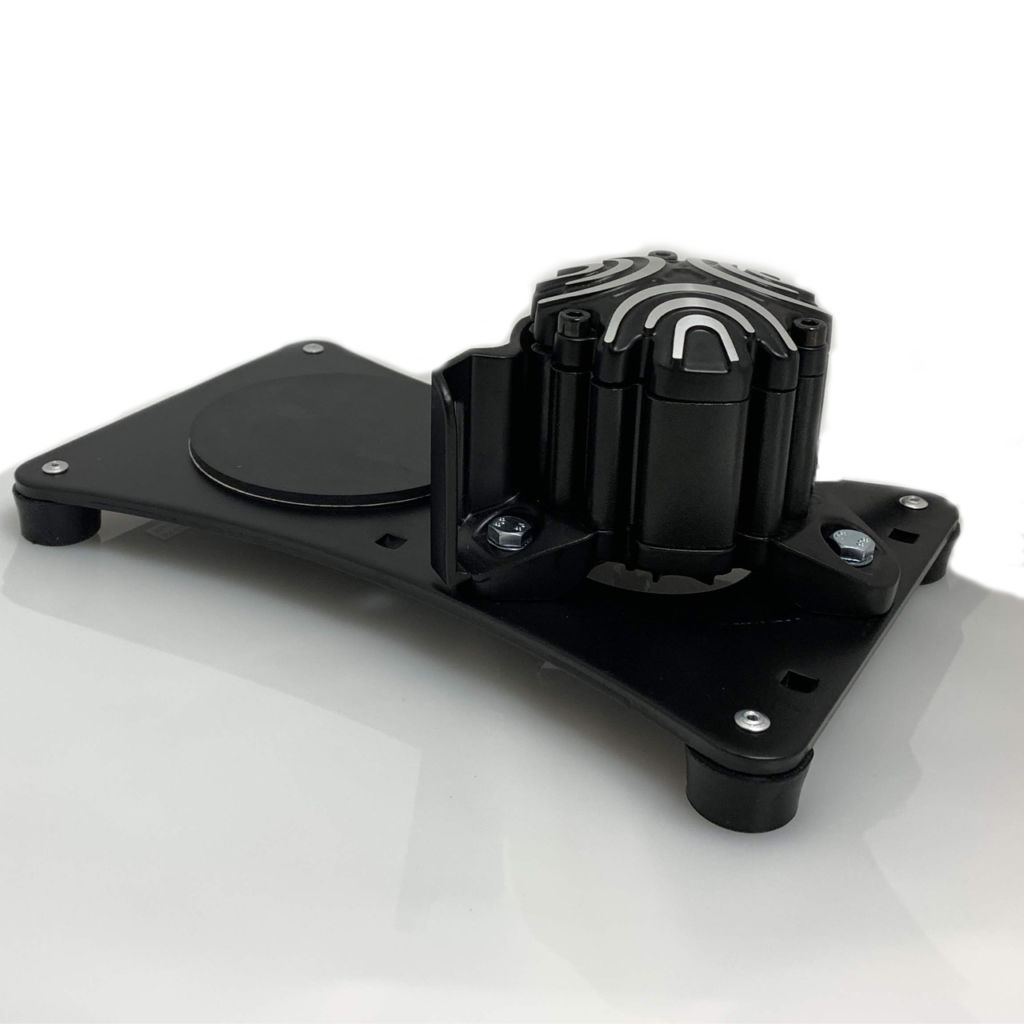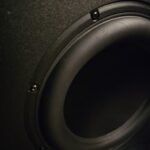Are Bass Shakers Worth It? (Revealed!)
Are Bass Shakers Worth it? (Revealed!)

Bass shakers are definitely worth it since they add a tactile element to the bass allowing you to feel the action happening on screen without the noise of a subwoofer — making it a viable alternative. Often referred to as tactile transducers, these devices immerse you in your content in a way that’s truly exciting.
Today we’re going to be covering a novel home theater accessory so cool that, no joke, might just change the way you watch movies, television, etc.
Imagine something that could give your content physical impact that shakes your seat without the need to be turned up extremely loud, or disturbing your neighbors.
In short, they’re called bass shakers, and you can think of this as a comprehensive beginner’s guide to everything you need to know about bass shakers.
We’ll cover what they are, and how you can use them for your next movie night.
So, are bass shakers actually worth it and should you give them a try?
Let’s find out in this in depth look!
What Is A Bass Shaker?

To put it simply, a bass shaker is a small device with an electromechanical motor that attaches to your seat — whose sole responsibility is to emit low frequency sounds so low that you’ll actually feel it during your content.
They’re somewhat similar to a passive speaker or subwoofer given they still require power from your receiver.
However they’re different in that they’re focused on delivering the sounds below 20hz, rather than the ones you can hear.
Often also referred to as a tactile transducer, they basically output sounds that are so low frequency that they’re actually far below human hearing.
Known as tactile sounds, this is the range where sound actually becomes tactile and unable be audibly heard.
For example if you’ve ever been to a concert, you’d know that whenever there’s a bass drop or a drum kick, you can actually feel it and not just hear it.
These emulate that same effect.
The reason for this is that humans have a hard time discerning sounds around 20 Hz and when they drop lower than this range, we start to perceive sound as being physical rather than audible.
It’s an interesting phenomenon for sure, but definitely something you’d need to experience to fully appreciate.
Some subwoofers do this quite well.
The awesome thing about bass shakers is that they’re built in a way to optimize this same feeling but in the comfort of your own home.
What Are The Advantages Of A Bass Shaker?
So there’s actually 2 distinct advantages that bass shakers have over a subwoofer that you’ll want to keep in mind when deciding if they’re right for you.
~You’re The Only One That Actually Experiences It
The first has to do with audibility.
In order for a subwoofer to get below 20 Hz, typically the sound level of your content has to be incredibly loud, sometimes nearing reference levels (the standard level at which movies are calibrated and mixed)
That’s if your subwoofer can even go that low as it takes exponentially more power the lower in bass you go — also requiring it to be bigger in size.
A lot can’t, and the ones that can are usually gigantic.
What’s even more unfortunate is that there’s a lot of content in these lower ranges as well that a lot of people miss due to an inadequate sub, and the result is an experience that has the potential to be much better unbeknownst to them.
Enter bass shakers.
Due to their piston like design, bass shakers can easily reproduce the content in these ranges without shaking everything in the room.
Everything becomes a lot more physical.
Rather than just hearing say, an explosion on screen, now you actually feel it.
It’s a level of immersion that’s unlike anything you’ve experienced.
But what’s also particularly unique about them is that they isolate the sensation so that the only person experiencing it is the person that’s in the seat that they’re installed on.
How cool is that?
These are great for the individual that wants to actually experience their content the way it was meant to be without having to turn things up deafeningly loud and or annoying their neighbors.
Somewhat similar to how decoupling a subwoofer from the floor can reduce the bass that travels through the floor, a bass shaker can also be a way to reduce the bass that travels.
However it can also confine a majority of the bass to that seat only.
That means for the people who live in an apartment or dorm, these are an especially attractive addition due to the fact that you won’t disturb your neighbors, and can still get that deep tactile feeling without the need for a giant subwoofer — especially if you’re already limited on space as is.
Even if you do have a sub capable of going this low, these still add an additional level of immersion that you’re likely missing; which leads into the second advantage.
~They Provide A More Precise Tactile Experience Over Subwoofers
Another benefit that these offer in comparison to subwoofers is that the tactile response you get from bass shakers is much more accurate and physical; even when compared to subwoofers that can play this low.
Bass shakers are meant to be placed on your home cinema seating so that as a movie plays, you feel the sound happening in the movie.
Rather than it being one flat low frequency effect, you’ll actually feel the subtle differences between whatever is happening on screen.
It’s a lot more nuanced in its delivery.
It’s hard to articulate exactly what that’s like, but if you experience it firsthand you’ll see what I mean.
They’re certainly fun, that’s for sure.
Can A Bass Shaker Replace A Subwoofer?
Here’s another question that you might have at this point, and that’s can one of these actually manage to replace a dedicated subwoofer?
Honestly, I’d have to say it depends.
It depends on the type of bass shaker, the sub, the type of seating you have, etc.
Remember while a subwoofer can produce sounds below 20 Hz (if it was engineered to do so) that’s not its only job.
Unlike a bass shaker, a subwoofer also has the responsibility of reproducing sounds up to 80 Hz which is the crossover point where your speakers then take over.
So while it can produce sounds that might not be audible, its job is to also produce the bass that you can hear.
A bass shaker can’t do this.
It’s also a type of bass that everyone in the room can experience; not just the person in one particular seat.
So to answer the question, even though I can’t definitively say whether or not they’ll be able to fully replace a sub since it’ll depend on your individual circumstance, what I can tell you for sure is that they can amplify your experience tremendously if used in tandem with one.
You may also happen to come across something extremely similar called a tactile transducer.
Is A Tactile Transducer & Bass Shaker The Same Thing And Which Is Better?
To simplify things a bit, you might notice that the terms tactile transducers and bass shakers are used interchangeably and that boils down to their very close similarity.
Tactile transducers do the same thing, however the only difference is that they sometimes have the capability of going into the higher ranges like a subwoofer.
That being said, there’s also a lot out there that only do LFE (low frequency effects).
In summation, they can pretty much be thought of as the same thing so don’t get too caught up as far as semantics are concerned.
Just note that some might be capable of different things than others.
So in terms of one of them being better than the other, it’ll really depend on what you personally prioritize; a higher frequency range or deeper bass, as well as the actual product itself.
How Do You Install A Bass Shaker?
The installation process for shakers isn’t too hard, but it will take a little time.
Luckily there’s a bunch of guides out there, so here are 2 different sources that explain the process.
Keep in mind that the installation process will vary depending on what you choose in addition to what receiver and amplifier you have, so these are just two examples of how it can be done.
https://www.aperionaudio.com/blogs/aperion-audio-blog/how-to-install-bass-shakers-in-your-home-theater
Are Bass Shakers Worth It?
So are bass shakers worth it?
Well here’s what to know.
Bass shakers are definitely worth it since they add a tactile experience to the bass that allows you to feel the action happening on screen without the noise of a subwoofer — making it a viable alternative.
These devices immerse you in your content in a way that’s truly exciting.
By allowing you to feel the action happening on the screen, it can really amplify things.
I know firsthand since I’ve used them and it’s hard to put into words just how game changing bass shakers can be, especially when go from standard television audio to this.
It’s something you’d need to experience first hand to believe.
A good bass shaker really makes movie watching an entirely different experience in my opinion.
Even gaming I feel like becomes a lot more thrilling and immersive.
Of course this is going to be dependent on which one you choose, but a good bass shaker will certainly make all the difference with your content.
The experience is incredible when you choose the right one.
There’s certainly an entirely new dimension to scary movies with them that’s for sure.
Which Bass Shaker Would I Recommend?
What makes it difficult to outright recommend the exact ones to go with is due to the fact that each receiver has different capabilities in terms of what it will and won’t work with — meaning if I were to say hey get these, but your receiver wasn’t compatible with that particular transducer, then that’d be a problem.
Then there’s also the fact that everybody has different types of seating arrangements which arguably plays an even bigger role compared with regular speakers.
But something extremely important to note is that each bass shaker has what is known as an Ohm rating, and that’s basically a measurement of the amount of resistance an audio component gives to produce a given output (also referred to as the impedance)
The lower this number, the easier it is to power.
Thing is, certain receivers support specific ohm ratings at a particular wattage.
I say all of that to say when looking for a quality shaker, make sure that the one you’re interested in getting is actually supported by your receiver and will actually fit in your chair/sofa.
There’s a lot of great ones out there, so you shouldn’t have any issues when it comes to finding the one that suits you.
Just remember the previous things I mentioned before and you’ll be golden.
One of my personal favorites is the Dayton Audio BST-1 so that may be a good one to consider.
I know the Denon AVR-S760H receiver also goes down to 4 Ohms, so that might be a good receiver to go with too if you want to simplify things and gain a little more wiggle room in terms of what will work with what.
The article listed below may help as well if you want to get a receiver that may work with the shaker you’re particularly interested in.
https://easyhometheater.net/the-best-home-theater-receivers
Final Thoughts
So hopefully I helped in regards to answering the pertinent question of whether or not bass shakers are actually worth it.
In a word, yes.
Yes they are.
The amount that it adds to the entire home theater experience is hard to put into words.
A game like Forza is entirely different when it feels like you’re actually driving.
A movie like Godzilla is absolutely unreal when you can feel each footstep.
It’s something you’d need to see to believe. It’s awesome.
But that about wraps it up for this one folks.
Until next time, make it easy keep it simple.
About Me

Jay
Hey everyone it’s nice to meet you. I'm Jay, writer & founder of the site Easy Home Theater. I've been with this hobby of home entertainment for many years now. I decided to create this site to be a helpful resource, and share everything that I've learned from personal experience with you. I also happen to be a huge gamer, lover of all things tech related, and a major fitness buff (love weightlifting)
Contact: Contact Jay
Facebook: https://www.facebook.com/Easyhometheater/
X: https://x.com/easyhometheater
Pinterest: https://www.pinterest.com/easyhometheater/pins/
Instagram: https://www.instagram.com/easyhometheater/
Followit: https://follow.it/easy-home-theater
Bluesky: https://bsky.app/profile/easyhometheater.bsky.social







Leave a Reply